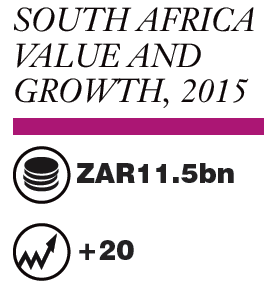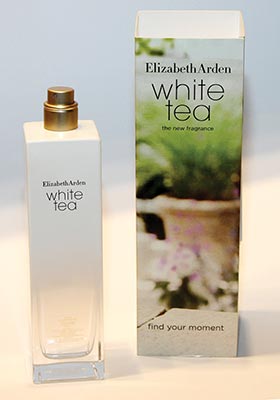South African fragrance sales are growing swiftly. Research in a report released by Euromonitor International in April 2016 entitled Fragrances in South Africa showed a market more than doubling from South African rand ZAR5.288bn (US$423m) in 2010 to ZAR11.505bn ($923.4m) in 2015.

Equivalent to 2.4m.
Source: Euromonitor International
This was driven by South Africa’s growing middle class, supporting strong sales growth for both mass and premium fragrances. Price and label positioning differentiate the mass and premium markets with South African-sold mass fragrances rarely carrying a designer label. The report also credits the growth to women’s improving career prospects and an expanding number of higher-income women able to afford premium fragrances.
According to Euromonitor, South Africa experienced a 20% current value growth in 2015 year-on-year for fragrance sales, beating the 17% increase in 2014. The increases were partly explained by the rand’s depreciation inflating import prices. On 31 December, 2014, US$1 was worth ZAR11.50, but ZAR15.53 a year later, recovering slightly to ZAR13.71 the following year. Imported products still dominate South African sales, despite the year-on-year value unit price of women’s fragrances rising 17% and men’s fragrances 14% in 2015.

Launch highlight: Elizabeth Arden White Tea
In January 2017, Elizabeth Arden launched the
women’s fragrance White Tea in South Africa,
complementing the Green Tea line
launched in 1999. Developed by
perfumers Rodrigo Flores-Roux,
Guillaume Flavigny and Caroline
Sabas, it is billed as being inspired
by simple pleasures, such as the first
sip of a quality tea. The notes include
mandarin, clary sage, white fern, sea
breeze accord, white tea, rose, mate,
musk, amber, madras wood,
ambrette seed and tonka bean.
Elizabeth Arden White Tea is
available throughout the country’s
major retailers in 30ml, 50ml and
100ml Eau de Toilette.
Dynamic premium scents

The strongest current value growth rates came from premium fragrances, with cost concerns less likely to affect high-income consumers. Premium women’s fragrances experienced



